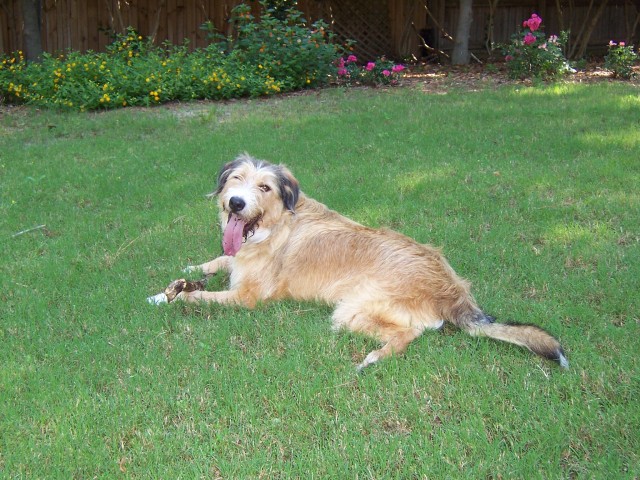QuestionHello,
I volunteer at one of the animal shelter. These days I have been working with one of the dogs who has been here for over a year. She has dog aggression issue.I have wonderful relation with this dog. She respects & trusts me a lot.
Today after letting her exercise on treadmill, walk & play in dog run I decided to spend some time in her cage with her. Everything was going great, but after 10-15 she growled 4-5 times. I just said "what" and she stopped growling.I was just sitting at the time not even looking at her.
I am 99% sure that it was play growl because her body seemed relaxed & was wagging her tail in fast motion.
1. Is there a way to determine just by listening to a growl if the dog is acting playful or its being aggressive? (just like by listening to a bark you can interpret)
2. What are the body parts I need to see to read if the body language is playful or aggressive when she is growling?
Thanks,
Jatinder Kalsi
AnswerDear Jatinder,
The "fast motion" of her tail alarms me, as does of course the growl. A tall stiff fast tail wag is NOT necessarily a friendly wag. In my experience 4 out of 5 tall stiff fast tail wags indicate high excitement in the "I dare you to mess with me" realm. If a dog ever aimed that wag at me you can bet I'd be leaving the cage.
Some dogs "talk" a lot during play, and it takes a little time to distinguish between their "talk" and their growl. But it seems that she was not comfortable with your presence in the cage, mainly because you've never heard her growl OUTSIDE the cage. It's a little surprising to me that the shelter allows you to sit in the cage with her, but that's their call. If it was me, I'd stay out of the cage from now on.
If you're working with dogs a lot you get to know the different sounds of happy play "talk" and not so happy agitation or outright anger or stress. You have to work with a particular dog for at least a few weeks before you can know what sound means what, and that assumes she's vocalizing quite a bit during those weeks. In general if you're a shelter worker you can trust your gut on what sound means what, but (I could be wrong here) it sounds to me like you have never been bitten and are slightly more trusting than I would be with a dog I've only worked with for a few days.
This goes for the body language too. Lips lifted, ears back pretty much means back off. Loose medium height wag usually means everything is A-OK. Again, if you're working at the shelter you're learning this already, but remember each dog is different and you should work with each for a while before making any assumptions.
We don't normally know what history a shelter dog has and they often have unpredictable cues to aggression. A common one is a hat; it seems that some dogs have been abused by someone who wears a hat, and so if you wear a hat that dog will likely be suspicious of you. It's possible that something you did in the cage cued the dog to something that scared him, and until you know what it is, I'd play it safer than you did.
I hope this helps. Thanks for writing.
Suzanne Harris, BSc, CPDT
http://www.dogdaysUSA.com

 Post bladder surgery potty training for INDOORS!
QuestionTiki
QUESTION: Dear Dr. Connor,
My 10 ye
Post bladder surgery potty training for INDOORS!
QuestionTiki
QUESTION: Dear Dr. Connor,
My 10 ye
 uncontrollable beagle
Question
max
My beagle is a year and a half. Ive had hi
uncontrollable beagle
Question
max
My beagle is a year and a half. Ive had hi
 anxious dog
Question
Louie
Hi, We adopted a 2 year old male A
anxious dog
Question
Louie
Hi, We adopted a 2 year old male A
 licking the floor not stop
QuestionGeorgie
QUESTION: Hi,
I have a 7 year ol
licking the floor not stop
QuestionGeorgie
QUESTION: Hi,
I have a 7 year ol
 Very Scared Dog
Question
Happy
My dog is 17 months old and is a mixed b
Very Scared Dog
Question
Happy
My dog is 17 months old and is a mixed b